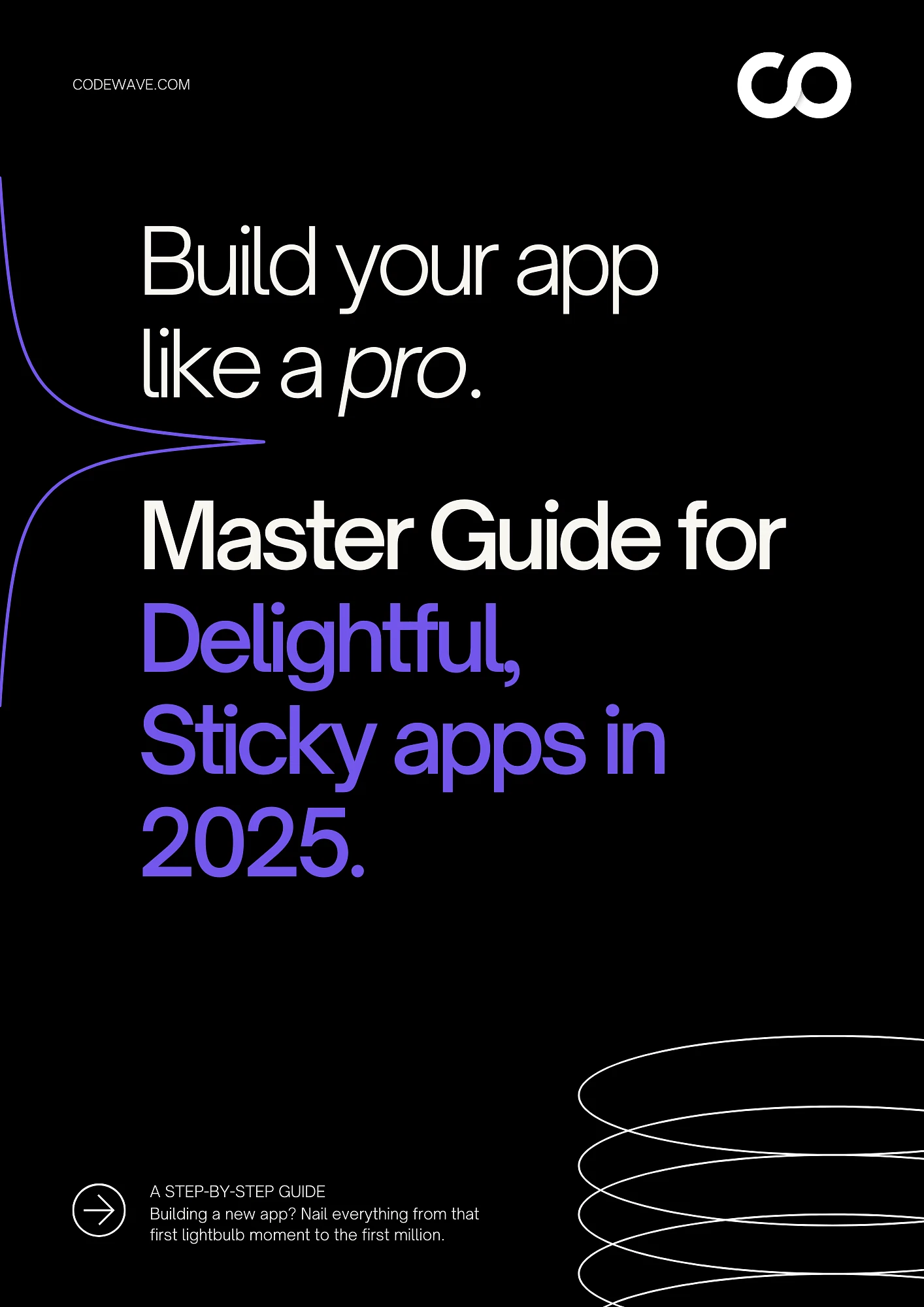Building your first MVP (Minimum Viable Product) is often the hardest part of turning an idea into a viable business. Startups typically face challenges like defining core features, managing limited resources, and testing assumptions with real users.
According to a survey, 38% of startups fail due to building the wrong product, highlighting the importance of getting the MVP right. Overcoming these hurdles early on not only saves time and resources but also lays the foundation for future scalability and a successful product-market fit.
In this blog, we’ll explore the common obstacles businesses face in MVP development and discuss practical strategies for tackling them.
Key Takeaways
- The biggest obstacles in MVP development include defining core features, managing limited resources, and testing assumptions with real users.
- To balance speed and quality, prioritize essential features, adopt lean development practices, and focus on iterative testing.
- Resource constraints can be mitigated through outsourcing, using low-code/no-code platforms, and reusing existing technology stacks.
- Planning for scalability from the start ensures your MVP can grow without major redevelopment later.
- Effective user testing should focus on validating core assumptions while avoiding over-testing to maintain momentum.
How to Balance Speed and Quality in MVP Development
Building an MVP requires a delicate balance between speed and quality. You need to get your product to market quickly while ensuring that it meets user needs and delivers value.
In the rush to launch, it’s easy to compromise on quality, but cutting corners in the early stages can lead to bigger problems down the road.
Here’s how you can strike that balance:
1. Identify the Core Features That Matter
Instead of trying to build a fully-featured product, focus on the essential features that will validate your idea. Prioritize functionality that directly solves your target users’ biggest pain points.
Think of the “must-have” features that will make the MVP functional and valuable. Avoid adding “nice-to-haves” or unnecessary complexity.
For example, if you’re building an e-commerce MVP, your core features should include product listings, a shopping cart, and a payment system.
Everything else, like advanced search filters or multiple payment options, can be added later, after gathering user feedback.
2. Build for Real-World Testing, Not Perfection
The goal of an MVP is to test assumptions, not to create a perfect product. Focus on making your MVP good enough to gather real user feedback and validate the market demand.
Think of it as a stepping stone toward your final product. If it works and solves the problem, it’s good enough for now.
This allows you to launch faster and avoid over-engineering features that may not be necessary. As you collect feedback, iterate on your product to improve it. The key is creating a functional MVP that demonstrates the product’s value.
3. Use Lean Development Practices
Lean development is all about minimizing waste, whether it’s unnecessary features, processes, or resources. Instead of spending time on features that may not move the needle, build only what’s necessary to achieve your objectives.
Lean methods involve rapid development cycles, where you release a basic version, gather feedback, and make quick improvements.
This approach enables faster releases, ensuring you don’t spend months on end without knowing if users will engage with your product.
4. Test in Small Iterations
Instead of launching everything at once, break down your MVP development into smaller, manageable chunks. Begin with basic features, launch them promptly, and utilize the feedback to inform your next steps.
By focusing on smaller iterations, you can respond faster to user feedback and adjust features without waiting for the product to be “finished.”
5. Implement Scalable Infrastructure from the Start
While focusing on speed is important, quality shouldn’t be sacrificed in areas that impact future scalability. Even if your MVP is simple, ensure your tech stack and infrastructure can scale to support growth as your product gains users.
Use cloud-based services or scalable solutions that can accommodate increasing demand without requiring a complete overhaul.
For instance, instead of hardcoding systems, use APIs and modular systems that can easily scale as your user base grows. This ensures that you won’t face bottlenecks or performance issues when your product starts gaining traction.
6. Avoid Over-Designing the UI/UX
While user experience is key, an MVP doesn’t require a perfect design from the start. Prioritize usability over creating a visually polished interface.
Keep it simple and ensure a smooth, intuitive user journey, but avoid wasting time on fancy graphics or complex animations. Instead, allocate resources to functionality and core features.
7. Focus on Performance Over Aesthetics
For your MVP to stand out and be effective, it needs to perform well. Focus on speed, responsiveness, and reliability.
An MVP that runs smoothly, even if it’s simple, will impress users and show potential investors that you have a viable product. If the product is slow or buggy, no amount of attractive design will save it.
Tip: Use Feature Prioritization Frameworks to Stay Focused
As you balance speed and quality in MVP development, it’s crucial to focus on what truly matters. Feature prioritization frameworks like MoSCoW or the Eisenhower Matrix can help you decide which features to develop first, ensuring that you’re building the right functionality to achieve your goals.
1. MoSCoW Framework: Helps you categorize features into:
- Must-have: Essential features without which the product is not viable.
- Should-have: Important but not critical features that enhance the MVP.
- Could-have: Nice-to-have features that aren’t essential for launch.
- Won’t-have: Features that can be deferred for later iterations.
2. Eisenhower Matrix: Helps you prioritize based on urgency and importance:
- Urgent and Important: Address these features first.
- Important but Not Urgent: Schedule these features for later.
- Urgent but Not Important: Delegate or minimize these features.
- Not Urgent and Not Important: Avoid these features during the MVP phase.
Also Read: Top MLOps Tools and Platforms: Key Features You Need to Know
In addition to managing time and quality, handling resource constraints effectively is crucial for building a successful MVP.
Overcoming Resource Limitations and Optimizing Development for Scalability
Resource constraints, such as budget, time, and manpower, are common challenges in MVP development.
Optimizing resource usage through strategies like outsourcing and leveraging existing technology stacks can help maximize efficiency.
Additionally, planning for scalability early on will save time and costs in the future, ensuring the product is ready for growth without major redevelopment.
1. Resource Constraints in MVP Development
Resource limitations are one of the biggest hurdles in MVP development. The typical challenges businesses face include:
- Limited Budget: Most startups have tight budgets and must prioritize what features to develop. Without careful planning, this can lead to underdeveloped products or features being rushed to meet deadlines.
- Time Constraints: Speed is often crucial to meet market demands and outpace competition, but cutting corners can lead to long-term technical debt and scalability issues.
- Manpower: Small teams may not have all the required skill sets to handle every aspect of development, which can lead to outsourcing or delays.
2. Optimization Strategies to Maximize Resources
Businesses can apply several strategies to make the most out of limited resources:
1. Outsourcing
Outsourcing certain non-core tasks, such as design or specialized development, can reduce overhead costs and ensure that key areas receive the attention they need. Research by McKinsey indicates that outsourcing can reduce costs by up to 60% for startups in the development phase.
2. Low-Code/No-Code Platforms:
These platforms allow businesses to rapidly create MVPs without writing complex code. For instance, tools like Webflow enable businesses to quickly launch MVPs, allowing teams to focus on product refinement.
3. Using Existing Tech Stacks:
Instead of building everything from scratch, businesses can reuse existing frameworks, libraries, or tools to save development time. This reduces the learning curve and accelerates the build process.
3. Planning for Scalability Early On
Planning for scalability from the outset is vital. Scalability issues often arise when businesses focus solely on building an MVP without considering long-term needs. Here’s how to integrate scalability into MVP development:
- Design with Growth in Mind
Design the architecture to handle increased load without requiring a complete overhaul. Choose cloud-native services that can scale based on traffic. This avoids the need for major infrastructure changes down the line.
- Modular Design
Break the product into smaller, independent modules or microservices. This enables easier scalability as each service can scale independently. According to Gartner, 74% of organizations have already adopted microservices architecture, with another 23% planning to do so, highlighting its growing importance in modern development.
- Prioritize Performance
Ensure that MVP features are optimized for performance, focusing on speed and reliability, even at early stages. Utilize performance benchmarks, such as Google Core Web Vitals, to ensure responsiveness and smooth user interactions.
Struggling with Mobile App Development? At Codewave, we turn your app ideas into high-performance products, delivered 3X faster and at 30% lower cost. With our expertise in design thinking, user experience, and robust scalability, we ensure your app is engaging, secure, and built to grow.
As you prepare for launch, it’s essential to focus on gathering valuable user insights without getting bogged down by over-testing.
Efficient User Testing and Preparing for a Successful MVP Launch
When developing an MVP, striking the right balance between gathering user feedback and keeping the development process moving forward is crucial.
Over-testing can delay progress and lead to unnecessary changes, so focusing on the right kind of feedback at the right time is essential.
The goal is to validate core assumptions while maintaining momentum.
1. User Feedback: Avoiding Over-testing
User feedback is crucial, but too much can create analysis paralysis. Instead of spending months refining every detail based on initial user feedback, focus on gathering insights that validate the core features of your MVP. Ask key questions:
- Does the product solve the main user pain points?
- Are users engaging with the core functionalities?
For instance, when building an e-commerce app, initial feedback should focus on whether users can easily browse products, add them to their cart, and complete checkout. A simple user survey or quick A/B test can confirm these basic needs without overcomplicating the process.
Also Read: How AI is Changing Test Automation in Quality Assurance
2. Effective Testing: Simple, Actionable Insights
Gathering actionable insights doesn’t require complex setups. Simple methods can yield valuable data:
- User Interviews: Conduct short, structured interviews to identify pain points and preferences.
- Surveys: Use concise, targeted surveys to understand user satisfaction with specific features.
- A/B Testing: Test variations of a feature (e.g., button color, placement, or wording) to determine which version yields better results.
3. Launch Planning: Ensuring Real-World Usability
Preparing for the MVP launch involves more than just pushing it out to users. The goal is to ensure that the product is usable, functional, and ready for real-world interaction. Key elements of launch planning include:
- Usability: Test the app under conditions that resemble real-world usage. Is it responsive? Does it load quickly? Does it work across different devices and platforms?
- Support Channels: Establish clear communication channels for users to reach out with issues. Whether through in-app chat or email support, ensure users can easily report problems.
- Feedback Loop: Set up mechanisms to gather ongoing feedback post-launch. Implement analytics tools to track user behavior, interactions, and common issues.
4. Iterative Improvements Post-Launch
Once your MVP is live, the work doesn’t stop there. The initial launch is just the beginning. Use the feedback collected during the launch phase to guide iterative improvements.
- Data-Driven Refinement: Use metrics to track feature usage and user drop-off rates. Prioritize the features that users engage with the most.
- Continuous Testing: Keep testing new features with real users, and don’t hesitate to make adjustments based on their feedback.
For instance, if users are consistently abandoning the checkout process, consider refining the user interface, adding more payment options, or reducing friction during the process.
How Codewave Can Take Charge of Your MVP Development
Building an MVP is a critical step in transforming your vision into a market-ready product. The challenge lies in creating a lean yet functional version that resonates with real users, and this is where Codewave excels.
Our custom MVP development services help you quickly bring your idea to life with maximum efficiency, ensuring a smooth transition from concept to feedback in record time.
What Codewave Brings to the Table:
- 50% Faster Time-to-Market: Through rapid prototyping and iterative development, we accelerate your MVP’s journey from concept to deployment, ensuring a quicker launch to gather user insights and validate your idea.
- 40% Lower Costs: We apply cost-optimization strategies to keep your MVP development within budget, focusing on core features that deliver the most value, so you don’t waste resources on non-essential features early on.
- 2X Faster User Feedback: With tools like Asana, Jira, and Airtable, we manage tasks effectively, ensuring that user feedback loops are closed swiftly, helping you fine-tune your MVP for better market alignment.
Why Codewave’s MVP Development Services Stand Out:
- End-to-End MVP Consulting: We guide you through each stage, from defining your vision to user testing, ensuring you stay on track and meet your goals.
- Lean Development Practices: Using Scrum and Kanban, we prioritize what matters most, helping you stay lean while developing a functional and valuable MVP.
- Scalable Architecture: Our scalable backend setups ensure that your MVP can grow seamlessly as your business gains traction.
Reach out to Codewave and let’s start building your vision together. Explore our portfolio to see how we’ve helped businesses like yours succeed.
Conclusion
Once your MVP has validated the product concept and gathered user feedback, it’s time to scale. The key indicators that your MVP is ready for full-scale development include consistent user engagement, positive feedback, and a clear understanding of your market fit.
To scale, focus on expanding product features based on user needs, ensuring that your infrastructure can handle increased demand, and integrating the insights collected during the MVP phase.
Ready to scale your MVP into a fully functional product? At Codewave, we specialize in taking MVPs from concept to full product development, ensuring that a strategic design-thinking approach backs every step. Contact us today, and let’s bring your product to life!
FAQs
Q: How do I know when my MVP is truly “ready” for launch?
A: Your MVP is ready when it effectively solves a key user problem, has a working core functionality, and has gathered enough initial user feedback. Focus on user engagement and real-world usability tests to ensure your MVP is viable before launch.
Q: What’s the role of design in an MVP?
A: Design in an MVP should focus on usability rather than aesthetics. Prioritize functionality and a simple, intuitive user experience, and leave advanced design elements like animations or fancy visuals for future iterations after user feedback is gathered.
Q: Can an MVP be successful with a small team?
A: Yes, an MVP can be developed successfully with a small team. The key is to focus on essential features, prioritize tasks based on their impact, and consider outsourcing non-core tasks or using pre-built solutions to save time and resources.
Q: How should I handle feedback during MVP development?
A: Prioritize actionable feedback that validates your core assumptions. Avoid over-analyzing minor details, and focus on testing whether the main problem your product aims to solve is being addressed. Keep feedback loops short and iterative.
Q: Is it necessary to have a mobile app MVP?
A: Not necessarily. A web-based MVP can be more cost-effective and quicker to develop. If mobile functionality is essential to your target users, however, consider building a mobile MVP in parallel or after validating your idea with a web-based version.
Codewave is a UX first design thinking & digital transformation services company, designing & engineering innovative mobile apps, cloud, & edge solutions.







